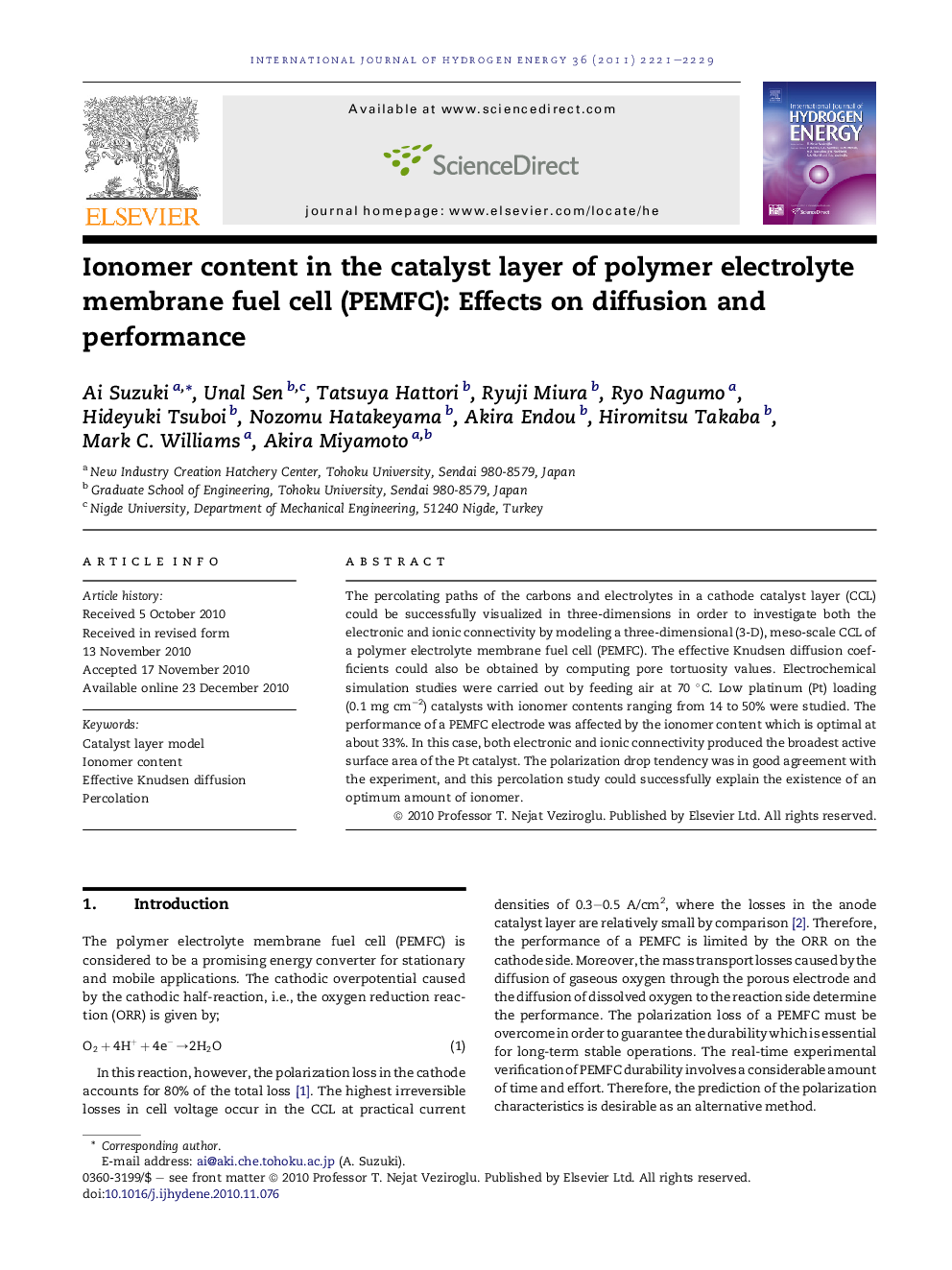| Article ID | Journal | Published Year | Pages | File Type |
|---|---|---|---|---|
| 7724447 | International Journal of Hydrogen Energy | 2011 | 9 Pages |
Abstract
The percolating paths of the carbons and electrolytes in a cathode catalyst layer (CCL) could be successfully visualized in three-dimensions in order to investigate both the electronic and ionic connectivity by modeling a three-dimensional (3-D), meso-scale CCL of a polymer electrolyte membrane fuel cell (PEMFC). The effective Knudsen diffusion coefficients could also be obtained by computing pore tortuosity values. Electrochemical simulation studies were carried out by feeding air at 70 °C. Low platinum (Pt) loading (0.1 mg cmâ2) catalysts with ionomer contents ranging from 14 to 50% were studied. The performance of a PEMFC electrode was affected by the ionomer content which is optimal at about 33%. In this case, both electronic and ionic connectivity produced the broadest active surface area of the Pt catalyst. The polarization drop tendency was in good agreement with the experiment, and this percolation study could successfully explain the existence of an optimum amount of ionomer.
Keywords
Related Topics
Physical Sciences and Engineering
Chemistry
Electrochemistry
Authors
Ai Suzuki, Unal Sen, Tatsuya Hattori, Ryuji Miura, Ryo Nagumo, Hideyuki Tsuboi, Nozomu Hatakeyama, Akira Endou, Hiromitsu Takaba, Mark C. Williams, Akira Miyamoto,
